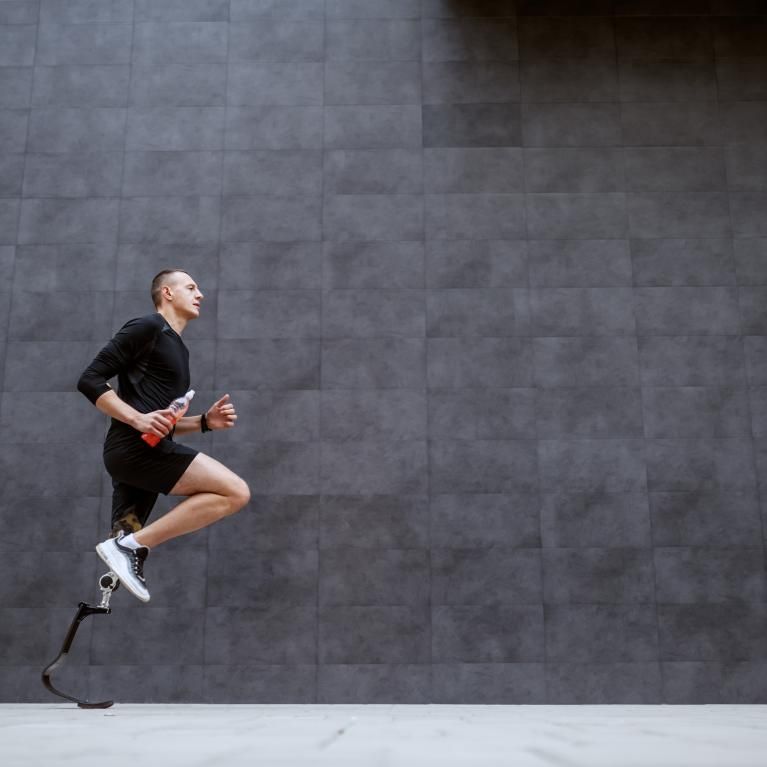
For participants with disabilities, nutritional needs can be vastly different.
Even at the same pace, participants who rely more on one side of their body, have a limb difference or use assistive devices often burn significantly more energy due to biomechanical inefficiencies and muscle imbalances.
These participants may need to consume more calories due to the extra effort required for movement and stability.
Carefully planning your nutrition and hydration can make all the difference on Marathon Day. And with the right strategy, you can power through and cross that Finish Line feeling strong.
Below, Anthony Bryan gives you his three tips for success.
Make sure you have a strategy
During training make a note of when you feel fatigued, or experience muscle aches, hunger, or cramping. These are signs that your body needs more fuel.
Taking on small amounts of fuel at regular intervals ensures your glycogen stores remain topped up, which will help you to avoid hitting the wall.
For participants with disabilities, glycogen depletion can occur sooner due to increased energy expenditure, so pay close attention to the body's signals and fuel accordingly.
As a starting point, aim to consume something within the first hour and every 30 to 40 minutes from then.
“When I ran the TCS London Marathon, one of my biggest concerns was carrying all my fuel,” Ant says. “Thankfully, I had a guide runner with a rucksack! However, I made one crucial mistake: I waited too long to take on electrolytes. By Mile 18, my legs were cramping, and for the final eight miles, I hobbled along, relying on whatever sugary snacks I could grab. Next time, I’ll fuel and hydrate consistently every few miles to avoid hitting that wall again.”
If you want to know more about perfecting your fuelling during training, here are three tips.
Find the right fuel for you
Your body will crave fast-acting carbohydrates to quickly replenish energy levels.
Some great options include:
- Jelly babies or gummy sweets
- Energy gels
- Bananas
- Sports drinks with carbohydrates
- Electrolyte-rich chews or tablets
You’ll need to find what agrees with your gut and practise the balance between consuming enough to keep you going without feeling too full or heavy.
If you’re opting for energy gels, check out these dos and don’ts.
Don’t forget to hydrate
You may sweat more than the average participant due to the increased effort required. This means you’ll lose more salts and electrolytes, which are essential for preventing cramps and maintaining muscle function.
You can consider electrolyte supplements, either mixed into your drink or taken as a chewable tablet. They help you to stay hydrated without the added bulk of excessive water intake.
This piece is written by para-athlete Anthony Bryan who represented England at the 2015 Cerebral Palsy World Games in Nottingham and competed in the 2024 Adaptive CrossFit Games in Texas. He’s no stranger to running either, as he took home the Guinness World Record for the fastest marathon with hemiplegia - a paralysis that affects one side of your body - at the 2024 TCS London Marathon.